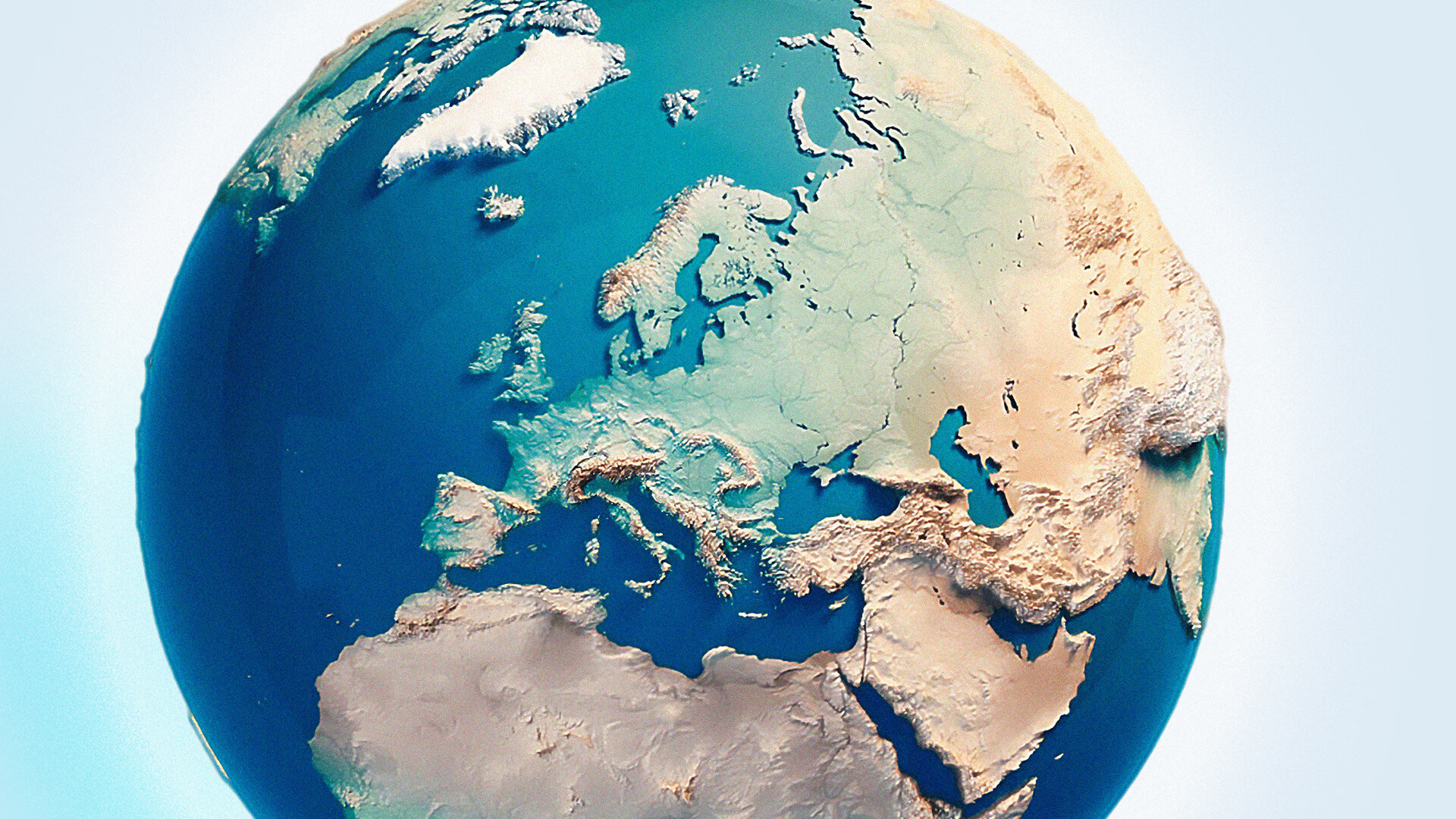Trade wars between the US and China. Supply Chain reorganisation following the pandemic. Reshoring. War in Europe. An absence of A-Listers at Davos(!). Globalisation is dead.
But is this really the case? And what are the implications for a globally invested portfolio?
Earlier this year, our colleagues David Price and Arthur Ntale delivered a myth-busting presentation, to highlight the continued importance of global trade and the growing wealth and skills of emerging markets.
Timing is everything
As an analytical bunch, we start with the numbers. At first glance, these suggest that trade has indeed stagnated since the global financial crisis, falling from 50% of global GDP to 42%1. So, if not full deglobalisation, then “slowbalisation” at the least. However, delve deeper and the picture becomes more nuanced. Around 60% of this decline can in fact be attributed to the fall in the price of fuels and mining goods2 as the commodities super-cycle of the late 2000s and early 2010s came to an end3.
Could the consensus be muddling trade volumes with values?
Taking a longer time horizon, as the first chart below demonstrates, the volume of global trade has expanded at a consistent, albeit unexciting, 4% growth rate since the World Trade Organisation was established in 1995, contrasting with the more volatile value of trade in the second chart below4.
Evolution of World Trade, 1995-2022
Volume Index, 1995=100
Value Index, 1995=100
The transition to renewable energy could boost trade volumes further from here. It will require vast amounts of raw materials, such as lithium, copper and nickel, many of which have concentrated supplies in very different locations from existing energy infrastructure. Kuehne & Nagel estimates that the logistics spend alone associated with the energy transition will total $200 bn.
It’s not all about goods
Mention trade and we tend to think of ships piled high with goods, forgetting about the services that have come to dominate modern economies. Trade in services, including offshoring, grew 11-fold between 1990 and 20205. Talk of this ending may be misplaced: workers in India design around 20% of the world’s semiconductors, but mostly for foreign companies who own the intellectual property6.
As one CEO said to us (in his inimitable style) “Love the Irish, love their beer, but we can get 2D animators cheaper in Bangladesh”.
Travel is another huge element of services trade, and emerging market growth will be a key driver in the decades ahead. Forecasts suggest that by 2040, 8 billion air passenger journeys will be taken every year, with Asia-Pacific the fastest-growing region7.
Emerging markets: The Sleeping Giants
There seems to be less excitement these days about emerging markets as a global growth driver, yet they are expected to account for two-thirds of global GDP growth between 2023 and 20288. Demographics plays a key role: the average age for citizens in Europe today is 42 whereas in Latin America and in Asia-Pacific it is 31. In Africa, it’s 189.
With this growth comes a rising share of global consumption, forecast to rise from about 40% today to over 50% in 203010. As emerging market appetite for higher value goods grows and upskilling continues, the impact on global trade could be considerable. This is reflected in the capital allocation decisions of companies like Kerry Group, which chose Indonesia for its most recent ‘Taste’ manufacturing and R&D facility.
The giant panda in the room
Programs like ‘Made in China 2025’ are often used to argue that China is stepping back from the world. But what if China is just changing who it chooses to trade with? Chinese exports to Belt and Road countries have increased from 14% to 38% of total exports11.
China is also deliberately moving up the value chain. For example, when the iPhone 3G launched in 2009, only 3% of the components came from China. By 2018, with the iPhone X, this figure had jumped to 24% and included key items such as touchscreens and camera parts12.
Finally, China is emerging as a major player in sustainable technologies. China State Shipbuilding Corp is building the world’s largest offshore wind turbines. Each can power 40,000 homes and is as tall as One Canada Square in London’s Canary Wharf13. Driven by demand for their electric vehicles, China now exports more cars than both Germany and Japan14.
Word on the ground
We use our conversations with companies to ensure they have the systems and resources to operate in today’s complex world. We ask questions such as: how is the Board thinking about the risks posed by evolving trade networks?
We also take a close look at how businesses are structured. For example, Thermo Fisher Scientific have adopted a “made in China for China” approach to manufacturing, to simplify supply chains and avoid getting caught up in the worst of the trade wars. Meanwhile, when Amphenol’s CEO visited our offices earlier this year, we discussed how they deliberately maintain a structure of 250 facilities worldwide. This means they can manufacture sensors and connectors very close to the site of use and, critically, tailor their offering for local markets.
Globalisation is dead; long live globalisation
China’s rise has triggered a bipartisan push in Washington to re-assert US tech supremacy, epitomised by efforts to limit China’s access to semiconductors – “the new oil”. It strikes us that, rather than signalling the death of globalisation, we are entering a new era of “weaponised interdependence”15. An era where governments use their control of certain choke points in global networks (semiconductor know-how in the US, oil and gas in Russia, renewable energy technology in China) to put pressure on others.
So, while economic and political disruption has unquestionably reshaped global trade, talk of deglobalisation seems premature. Instead, we see a reconfiguration of global trade, with complex dynamics and changing landscapes, that continues to promote global integration overall.
A note on the authors
We experimented with a new ‘member’ of our writing team for this edition: ChatGPT. Using previous editions of VIEW to train ChatGPT to write in our style, we took the ideas and framework from David and Arthur’s presentation, and asked ChatGPT to write the first draft of the text.
The exercise was thought provoking, yet ultimately unsuccessful as we edited almost all ‘its’ text out. We won’t be hanging up our writing pens just yet!
The experiment leaves us enthusiastic to explore further opportunities to use this technology to make our processes more efficient in other areas. But it tempered any lingering doubts in our belief that, for our business, it will be the combination of people and technology that will continue to deliver high-quality content for our clients.
- https://cepr.org/voxeu/columns/peak-globalisation-myth-part-2-why-goods-trade-ratio-declined ↩︎
- Ibid ↩︎
- A commodity super-cycle occurs when prices of commodities rise above their long-term averages for long periods of time. ↩︎
- https://www.wto.org/english/res_e/statis_e/trade_evolution_e/evolution_trade_wto_e.htm ↩︎
- https://cepr.org/voxeu/columns/peak-globalisation-myth-part-4-services-trade-did-not-peak ↩︎
- https://www.wsj.com/articles/indias-manufacturing-push-takes-an-audacious-gamble-on-chips-11670946984 ↩︎
- https://internationalbanker.com/brokerage/global-airline-industrys-forecasts-brighten-as-passenger-travel-numbers-soar/ ↩︎
- https://www.statista.com/statistics/805546/gross-domestic-product-gdp-in-the-emerging-market-and-developing-economies/ ↩︎
- https://www.statista.com/statistics/1226158/median-age-of-the-population-of-africa/ ↩︎
- https://www.worldeconomics.com/Regions/Emerging-Markets/ ↩︎
- Bernstein, The long view, EU logistics and China+1, 17 July 2023 ↩︎
- https://ig.ft.com/taiwan-economy/ ↩︎
- https://www.windpowermonthly.com/article/1822899/worlds-largest-onshore-wind-turbine-launched-chinese-manufacturer ↩︎
- China overtakes Japan as world’s top car exporter – BBC News ↩︎
- https://direct.mit.edu/isec/article/44/1/42/12237/%20Weaponized-Interdependence-How-Global-Economic ↩︎
 David Price
David Price  Arthur Ntale
Arthur Ntale  Catriona Hoare
Catriona Hoare 